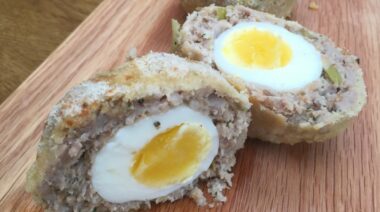Fredrick Hahn is a long-time professional in the fitness industry. He is an ACE certified personal trainer, the owner of Serious Strength Personal Training in New York City, co-author of The Slow Burn Fitness Revolution along with Michael and Mary Dan Eades M.D., and author of Strong Kids, Healthy Kids. I figured someone like Fred must have some good information to share with the rest of us, especially for those readers getting started on their fitness careers. So, I sat down with him to ask him questions. Read on for a great training lesson from someone who knows both from education and experience.
Tom: Fred, can you give the readers a brief overview of your education and background in the fitness and nutrition industry?
Fred: I started out as a personal trainer for New York Sports Clubs way back in the mid-1980s. I was a Nautilus training fan then and the head of the fitness department there was also, so we got along really well. Around 1993 I became a certified personal trainer and was hired by the brand new Equinox Club in New York City. I also landed the job of physical therapy aide and personal trainer for the Hospital for Joint Diseases newly renovated sports medicine center. I was in charge of designing and implementing all the strengthening programs for the patients. After two years there, the head orthopedic surgeon was so impressed by how strong I was getting his patients he asked me to collaborate and we opened a new physical therapy company called MetroSportsmed inside New York Methodist hospital in Brooklyn, New York. I ran that clinic for three years.
After leaving the clinic, due to trouble with the physical therapists not wanting to embrace high-intensity training principles, I enrolled at Long Island University to complete my degree in athletic training and exercise physiology. But my wife became pregnant and I found a fantastic space to open my own gym less than a mile from my home, so I left school and founded Serious Strength. The name, by the way, was thought up by my father when I was training him after surgery due to liver cancer. He got off the Nautilus leg curl machine and said, “Son, I can see how this slow training will give you serious strength.” Serious Strength celebrated our fifteen-year anniversary this past June.
Tom: You’ve been in the industry for over thirty years. You’ve seen all the popular diet and nutrition protocols come and go. Based on past experiences and diligent study, you now stand firm on your nutrition and strength training recommendations. Can you share those with us?
Fred: The research on nutrition for health appears to favor a high fat, low carbohydrate, adequate protein diet that is based on real foods as opposed to manufactured foods. There are some manufactured foods that can be eaten (pickles, sauerkraut, etc.), but you want to eat mostly foods that have walked, crawled, flown, or swam or have grown out of the ground with little processing.
As for exercise, research supports resistance training as the main or central part of a person’s exercise program. In fact, if you strength train correctly and consistently, you really do not need to do any other formal type of exercises like Pilates or aerobics. And resistance training will make you better at any sport or activity that you enjoy.
So this begs the question – since we need to strength train and since strength training provides all the benefits we require, how do you go about strength training? As I see it, it should be:
- Safe
- Time efficient
- Productive
I base my Slow Burn program on those three principles using the current science on the subject (plus a little experience) as a guide.
Tom: The low-carbohydrate approach. Why is this superior to other macronutrient breakdown recommendations?

Fred: Simply put, a low carb diet – or what I like to call a normal carb diet – allows your body to use stored body fat as its primary fuel source as opposed to dietary carbohydrates. This is why research always shows that people on low carb diet have low levels of blood fats (triglycerides). High triglycerides are a risk factor for cardiovascular disease. Randomized controlled trials indicate that keeping carbohydrates low, fat high, and protein adequate is the most healthful way to eat. This assumes you are eating real, non-manufactured foods, as many of these meats contain corn syrup solids and other hidden sugars.
Tom: In strength training, intensity of effort is required to stimulate muscle growth. Additionally, if you give it your all, there is no need to perform a high volume of work. Can you give a brief overview of the proven science that supports this point?
Fred: First, let me say that most studies on strength training are of a short duration. So it is true for advanced trainees that a higher level of volume might be required. I’m not suggesting five times the amount of volume I would suggest for the bodybuilder, mind you. But most people are not looking to become bodybuilders. In fact, in my 25 years of training people only a small fraction of clients wanted the most muscle possible. I’ve had people quit my program because they became too large!
What science does show, and what my experience tells me, is that a single set of an exercise taken to momentary muscle fatigue (or darn close to it) is sufficient to stimulate positive tissue remodeling (growth of muscle and bone). Henneman’s size principle of fiber recruitment supports this as well. There isn’t any theoretical reason to think that more volume beyond a certain point will build more muscle.
In fact, more and more natural bodybuilders are embracing and using high-intensity strength training principles in favor of high volume. It’s not that high volume doesn’t work – it does – but why spend so much time in the gym when you don’t need to? Many people live for and in the gym. They use the gym as their social network, their hobby, and their passion. So they formulate workouts in order to stay in the gym for hours at a time, most days of the week. Most of these people have superior genetics for bodybuilding, just like some people have superior genetics for modeling, drawing, or math. So for the genetically gifted, any type of training will make it appear as if their training caused their superior bodies. To a degree, it is true. But as is the case with most observational evidence, we can easily be deceived by what we see.
Tom: Consuming high saturated fats has long been a taboo. What is the latest research that actually supports the consumption of saturated fat and why is it not unhealthy?
 Fred: As Dr. Richard Feinman once said to me in an effort to educate me on this subject, “You can’t be found innocent in a court of law.” What this means with respect to saturated fat is there was never any evidence that it was harmful. None. Saturated fat was convicted on trumped-up charges. So there is no need to offer evidence that saturated fats are healthy when there is no evidence they are unhealthy.
Fred: As Dr. Richard Feinman once said to me in an effort to educate me on this subject, “You can’t be found innocent in a court of law.” What this means with respect to saturated fat is there was never any evidence that it was harmful. None. Saturated fat was convicted on trumped-up charges. So there is no need to offer evidence that saturated fats are healthy when there is no evidence they are unhealthy.
That said a recent meta-analysis published in the American Journal of Clinical Nutrition looked at all of the research on saturated fats and their effect on our health and concluded the following, “A meta-analysis of prospective epidemiologic studies showed that there is no significant evidence for concluding that dietary saturated fat is associated with an increased risk of CHD or CVD.”
Now, there have been papers that have criticized this report, but these criticisms have not put forth any evidence that saturated fat in and of itself is harmful. The naysayers point to studies where diet high in sat fat and sugar showed deleterious effects, but these papers cannot implicate saturated fat alone as the culprit.
Tom: We all know training and performance is fueled by carbohydrates, the preferred energy source of muscle contraction. Being a low-carbohydrate advocate, how would you optimize an athlete’s food intake to enhance training and competitive ability?
Fred: Depends on the athlete. New work by Drs. Jeff Volek and Stephen D. Phinney indicates fat can be made the preferred source of energy for most endurance endeavors by adopting a low-carb, ketogenic diet. But the switchover takes several weeks. Most athletes would not be interested in sacrificing that time.
Now, some athletic endeavors like MMA, sprinting, short-burst speed skating, and other highly glycolytic sports require quick replenishment of glycogen, so for these athletes a low-carb diet may not be optimal. But just an extra sweet potato or half cup of rice may be all these athletes require. No athlete requires a high carb diet. Even Dr. Timothy Noakes, author of the infamous book Lore of Running agrees.
Tom: A competitive athlete who believes he or she must perform Olympic lifts, plyometrics, and sport-specific resistance exercises comes to you for training program assistance. What advice would you offer him or her?
 Fred: Well, as you might have guessed by now, I’m a fan of science. All of the different forms of training you mentioned above result in one common outcome – increased muscular strength. You’re either stronger or you’re not. And when you’re stronger, you perform better given the same skill set. But as I said earlier, the number one consideration when prescribing a training modality to an athlete is safety. If the outcomes are relatively the same but one modality is inherently more dangerous than the other, it should be abandoned in favor of the safer program.
Fred: Well, as you might have guessed by now, I’m a fan of science. All of the different forms of training you mentioned above result in one common outcome – increased muscular strength. You’re either stronger or you’re not. And when you’re stronger, you perform better given the same skill set. But as I said earlier, the number one consideration when prescribing a training modality to an athlete is safety. If the outcomes are relatively the same but one modality is inherently more dangerous than the other, it should be abandoned in favor of the safer program.
Training fast and explosively in the training room only contributes to explosiveness on the playing field if the athlete is made stronger. And these types of training regimens will indeed make the athlete stronger, but at a price. There are safer ways to obtain the same results.
Tom: Your responses have been enlightening. Is there any parting advice you can offer?
Fred: There are many individual goals, so I can only offer a general template:
- Strength train twice weekly on non-consecutive days. Three tops.
- Take each set of each exercise to complete muscle fatigue.
- Add weight gradually and at each session.
- Use a controlled, non-explosive repetition tempo.
- Train your whole body at each session.
- Eat real food. Strive to make protein 20-30%, fat 60%, and the rest real carbs, avoiding grains and legumes if possible.
- Sleep well each night.
- Avoid excessive aerobic exercise. Nap instead.
- Decrease stress in any way you can.
- Do not take anabolic drugs.
- Be happy.
All photos except photo 1 courtesy of Shutterstock.






